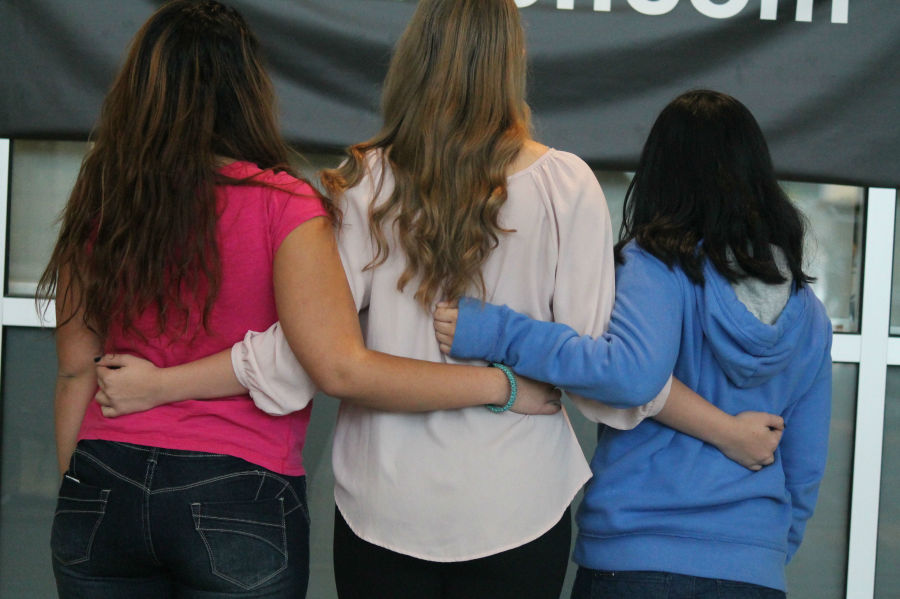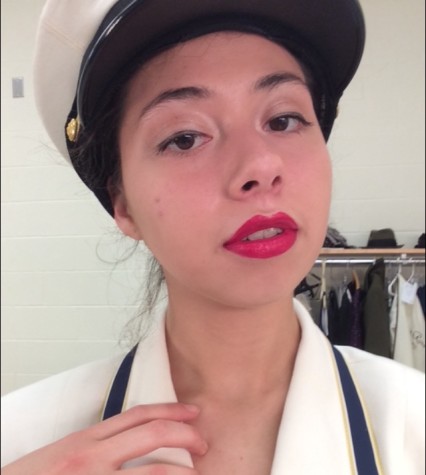Bisexual Representation In The Media
The bisexuality flag is pink, pale pink, and blue as represented in these ladies’ t-shirts.
December 8, 2014
Film and television media doesn’t seem to understand how to properly represent the bisexual community. As many teens find comfort in seeing people on screen similar to themselves, this can be an underrepresentation for the bisexual teen community.
Take Piper Chapman from Orange Is the New Black. She was in a relationship with Alex, then proceeded later with Larry, then went back to Alex. She seems bisexual, right? The problem is the show’s lack of the term bisexual. The show’s characters make references to the women who have been romantically involved with other women, and also with men, as straight, not bisexual. That erases their complex identity completely, thus not marking the characters with proper sexual orientation.
Another problem encountered in the media with regards to its representation of bisexual characters is that if they are assumed to be bisexual, they are also usually presented as promiscuous.
Let’s take the character Brittany Pierce from Glee. You remember Glee, right? It’s great that Glee included an explicitly bisexual character in the show, but her being the only bisexual character and making her promiscuous, does more harm than good; she alone is not a positive representation of the bisexual community.
On this issue, junior Allison Kinney, stated her opinion that she agrees that bisexuals in the media “are oversexualized” and that as a result of their underrepresentation, “[people] think they’re oversexual”, she said.
Another junior, Alejandro Picolomini, said that in regards to bisexuals in film and television, “I see this weird thing [where] they don’t [seem to] exist” he added that even when they are represented, they seem “confused or greedy”, another negative stereotype of the bisexual community. He agreed that this contributed to society’s views on bisexual people.
Equal Club member, junior Lucia Chambi said, when asked to name a bisexual character in film and television, that “[she] can’t come up with any.” She added that “[she feels] that bisexuals aren’t nearly represented in the media as gay people are. I guess the media is progressing, but they’ve got a long way to go.”
Nowadays, we see more and more homosexual characters in movies and TV, but communities within the LGBT+ spectrum, other than lesbians and gays, are not getting as much positive representation. Positive representation is important for broader societal acceptance of any group; when our society begins to see more positive bisexual characters in film and television, bisexuality will not be seen as just a phase, a state of confusion, nor as a synonym for promiscuity, but as a legitimate sexual orientation.




